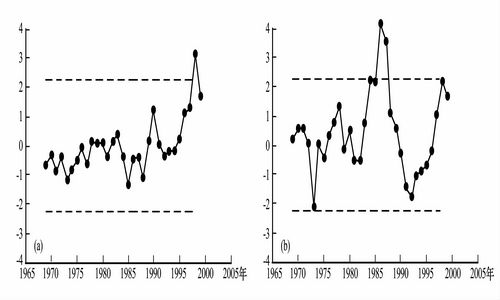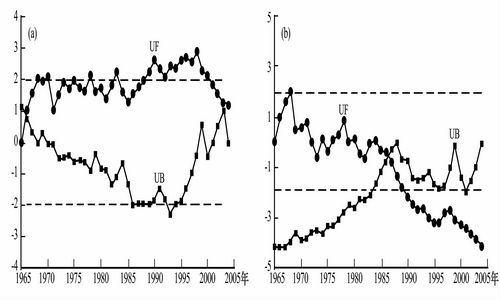The Abrupt Changing Characteristics of Snow Cover and Seasonal Freezing-Thawing Layer in the Tibetan Plateau and Their Impact on Summer Precipitation in China
Updatetime:2011-01-05From:
【Enlarge】【Reduce】
The change series of snow cover and seasonal freezing-thawing layer from 1965 to 2004 in the Tibetan Plateau have been established by using the observation data of meteorological stations. The overlapping T average, M-K test and B-G algorithm have been used to test the abrupt change of snow cover and seasonal freezing-thawing layer in the Tibetan Plateau. The results show that no obvious abrupt change in snow cover can be seen, but an obvious abrupt change in seasonal freezing-thawing layer occurred in 1987, with a decreasing depth of about 15 cm. When the snow cover in the Tibetan Plateau is little, precipitation in South China and Southwest China is much. When the frozen soil is deep, precipitation in most China is little. Both the snow cover and the seasonal freezing-thawing layer in the Tibetan Plateau can be used to predict the summer precipitation in China. When the impact of snow cover and seasonal freezing-thawing layer is considered synchronously, the predictability of summer precipitation can advance very much. Considering the synchronous effects of the two factors, there are three significant correlation zones from north to south. The north zone extends from the Daxing´an Mountains to the Hexi corridor through the northern Taihang Mountains and the northern Shaanxi province, the central zone is in the middle and lower reaches of Yangtze River, and the south zone is from Wuyi Mountain to Yunnan-Guizhou Plateau through Nanling Mountains.
|
The moving T-test curves of snow cover (a) and seasonal freezing-thawing layer (b) in the Tibetan Plateau (Picture/Journal of Glaciology and Geocryology) |
The M-K test curves of snow cover (a) and seasonal freezing-thawing layer (b) in the Tibetan Plateau |
Appendix






